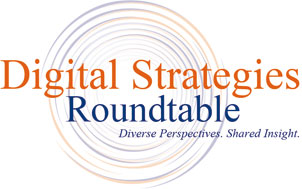
Delivering Great Customer Experiences
October 21 & 22, 2020
Milano, Italy - Hosted online by SDA Bocconi
It has been argued that it is no longer sufficient to “just” have great products, but that the right services must be built around them and it all must be delivered in a way that creates an “experience” that has emotional appeal and meaning for the customer, especially end consumers. Digital technology has increasingly been engaged in all aspects of this, stepping up the pace at which it unfolds. Given the pandemic, even B2C and B2B companies that were operating online have had to place more emphasis on digital processes and touchpoints. Everyone has access to more data than ever, and customers expect us to make use of it appropriately and are delighted or disappointed accordingly, all while wanting to be in charge of their own journey. What does it therefore mean, in today’s digital context, to have a customer-focused organization, an organization driven by passionate customer-centricity and how do you enable that? Meeting this challenge requires a focus on the customer that comes from all areas of the enterprise, an increased customer intimacy that creates understanding and leads to a great customer experience without stepping across certain privacy and trust lines. B2B customers expect the same...this is not just a consumer phenomenon. In this roundtable, we will focus our discussion on what it takes to create an environment for, and deliver on, great customer experiences, especially now that so much has to be physically distanced. Some of the questions we will seek to address are:
- How are your customers changing? Do you have different customers than five years ago with changed expectations or sensibilities? For instance, are millennial customers’ expectations different from those of baby-boomers? What are the implications?
- What impact has the digital transformation journey of the last years had on your customers and how you deal with them?
- What does it mean to be customer-focused? How have you created a customer-focused or customer-centric culture and who leads this? Are your processes customer-driven?
- Who “owns” the customer? Who manages customer interactions and experiences?
- How do you manage the decision process around customer touch-points? How do you react well and quickly? How are you ensuring you get smarter from every interaction?
- How do you compensate for less physical touchpoints? How do you meld online touch-points and offline touch-points to create a seamless experience for the customer? How do you guide them and yet let them feel in control of the journey? How do you provide a differentiated customer experience?
- Are you striving to be more data-driven in understanding/engaging customers? Do you segment customers? How do you do this without losing the individual narrative of each customer, and still ensure you are really listening to the need behind each interaction (what Clay Christensen has called understanding “the job to be done”)?
- How do you capture the right customer information, one version of the truth, shared appropriately? What are your keys to maintaining privacy and creating customer trust?
- How do you use social media to engage customers (or your customers’ customers)? How do you best influence that narrative and its impact on your brand?
- Have your customers contributed to the development of new products/services? Do you facilitate customer co-creation? How is the stream of immediate feedback from customers changing your value chain’s operations or decisions?
- How do you decide what customer information to share with the other organizations? What does social media mean for customer data usage and management? How do you combine data or information from it with other sources to create new knowledge?
- Increasingly there is a belief that great customer experience starts with a great employee experience, great employee engagement. Do you agree?
- How does the idea of a purpose-driven company affect customers and employees?


